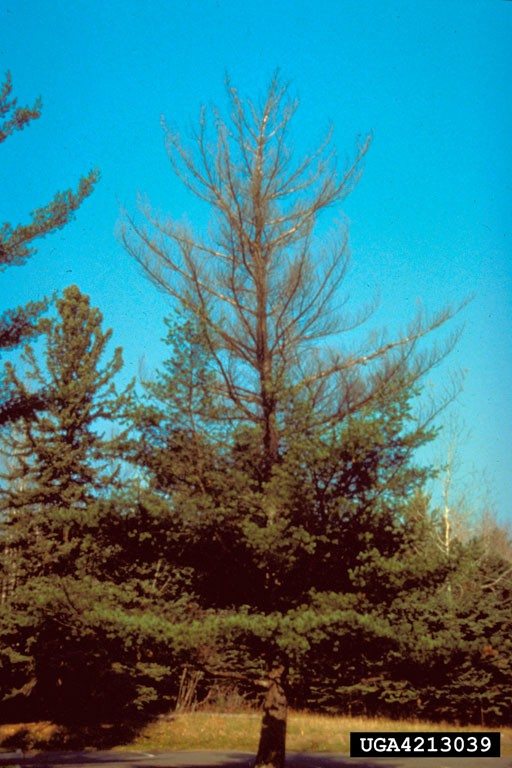What Is White Pine Blister Rust: Does Pruning White Pine Blister Rust Help


Pine trees are beautiful additions to the landscape, providing shade and screening out the rest of the world all year long. The long, elegant needles and hardy pine cones only add to the aesthetic value of your living Christmas tree. Sadly, white pine blister rust is a widespread and serious disease of pines everywhere, but by knowing the early warning signs you may be able to protect your tree for years to come.
What is Pine Blister Rust?
Pine blister rust is a fungal disease of white pines caused by Cronartium ribicola. This fungus has a complicated life cycle, requiring nearby plants in the genus Ribes for intermediary hosts. Ribes plants, like gooseberry and currant, often develop leaf symptoms, but rarely see serious damage from pine blister rust, unlike white pine. Pine blister rust symptoms on white pines are much more dramatic and severe, including flagging of entire branches; swellings, cankers, and blisters on branches and trunks; and resin flow or orange pustules erupting from branches and trunks. Infected areas within about four inches (10 cm.) of the trunk are at serious risk of spreading into the trunk itself, leading to a slow tree death.
White Pine Blister Rust Treatment
Regular inspections of white pines are a must since white pine blister rust caught early may be able to be stopped, whereas an advanced disease that's spread to the trunk will inevitably kill your tree. Pruning white pine blister rust is the treatment of choice for localized infections, but take care not to spread the spores when you're cutting out diseased tissue. Dispose of any pruned materials immediately in a fire or by double bagging in plastic. It was once thought necessary to destroy all Ribes plants in the area to prevent the spread of white pine blister rust, but after decades of such efforts, little progress has been made in slowing the disease. White pine blister rust-resistant individuals are being discovered in the wild and used to develop more hardy specimens for future plantings. For the time being, keep a close eye on your white pine and cut out any white pine blister as soon as it's noticed; there's no effective chemical treatment available. When the time comes to replace your tree, look for white pine blister rust-resistant varieties at your local nursery.
Gardening tips, videos, info and more delivered right to your inbox!
Sign up for the Gardening Know How newsletter today and receive a free copy of our e-book "How to Grow Delicious Tomatoes".

Kristi Waterworth was a regular contributor to Gardening Know How for many years, answering countless queries on plant pests and diseases.
-
 Looking For Plants To Give You The Soft And Fuzzies? Try These 5 Fuzzy Leaf Plant Options
Looking For Plants To Give You The Soft And Fuzzies? Try These 5 Fuzzy Leaf Plant OptionsLovers of texture, drama, silver foliage and tactile plants will adore these special sensory garden additions. These fuzzy leaf plant options will leave you all aglow
By Susan Albert
-
 Get Ready For A Summer Of Hummers! Grow These Full Sun Hummingbird Plants and Flowers
Get Ready For A Summer Of Hummers! Grow These Full Sun Hummingbird Plants and FlowersIf you’re lucky enough to enjoy a sunny backyard, make sure you are maxing out on your pollinator opportunities and grow these full sun hummingbird plants and flowers
By Tonya Barnett